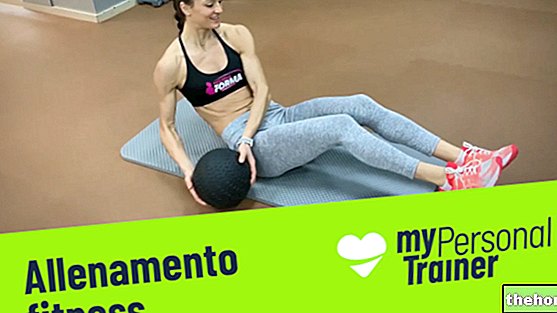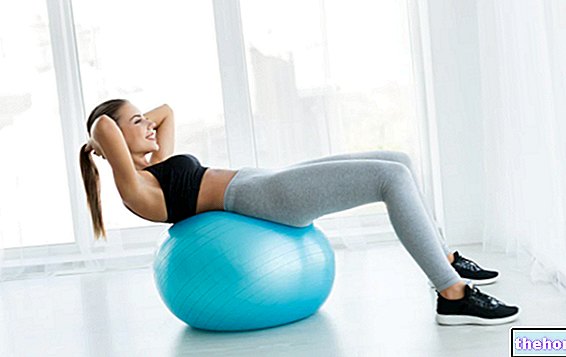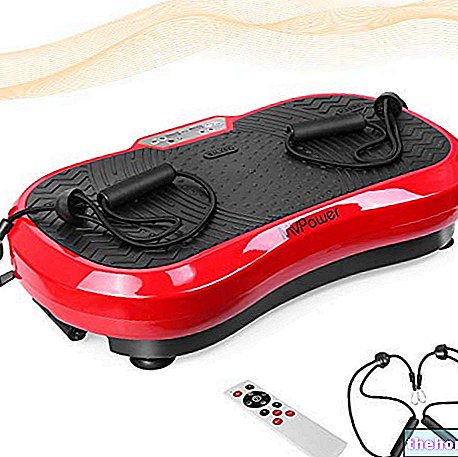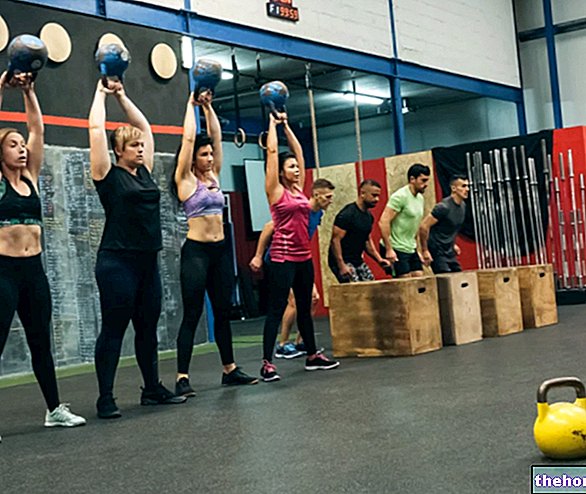The balance board is a fairly simple gym tool to use and including it in your training sessions, even at home, can lead to several benefits.
available in various models. The most common is made of wood or plastic, with a flat, round or rectangular top and an unstable dome-shaped bottom that allows it to move and bend in different directions to best suit the exercises you want to perform.
Benefits
There are many advantages of using it during your fitness sessions:
- improvement of balance and coordination,
- fortification of the muscles of the lower legs,
- increased motor skills,
- prevention of some injuries,
- improved posture.
While not designed for cardio training, the balance board also allows you to lose weight because training on it burns a lot of calories.
Finally, it is particularly used by physiotherapists during rehabilitation therapies for ankle sprains, because it improves their mobility.
Risks
Like any other tool, the balance board can also cause injuries if not used correctly.
Improving balance and increasing strength in the ankle are two of the main benefits of exercising on the ankle, however losing balance and falling is also the greatest risk.
This is why it is essential to pay attention and, if you suffer from weak ankles, knee or hip problems, it is better to limit their use or to be assisted by a physiotherapist or a personal trainer who can guide you in your movements.
, quadriceps, hamstrings, calves, core muscles, help improve stability, coordination and spatial awareness.
- Stand on the board, with your feet on the outer edges and hip-width apart.
- Maintain an upright posture and a straight spine.
- Choose a focal point in front of you to focus on so as not to lose your balance.
- Shift your weight so that the edges of the balance board do not touch the floor.
- The arms can be held straight in front of you or at your hips.
- Maintain balance for 30 seconds.
- Slowly tilt the board forward until it touches the floor, then back in the same way.
- Move back and forth for 30 seconds.
- Return to the initial equilibrium position.
- Slowly tilt the board to the right side and then to the left side.
- Perform these movements for 30 seconds.
- Return to the initial equilibrium position.
- Position yourself on the board, with your feet near the edges, a little wider than your hip distance.
- Keep your arms forward or at your sides to maintain balance.
- Slowly bend your knees while doing a squat.
- Push on your heels and return to the starting position.
- Do 10 to 15 repetitions, depending on your training level.
Plank
This exercise trains the abdominal muscles, glutes, hips, legs, shoulders, back and arms.
- Assume the starting position of the classic plank, but placing your hands on the balance board, slightly wider than shoulder width.
- Extend your legs behind you, keep your feet together and make sure your body is in a straight line.
- Keep your arms straight.
- Maintain the position for 30 seconds or as long as possible.
Lift
This exercise works your pectorals, triceps and core.
- Assume the starting position of the classic plank, but placing your hands on the balance board, slightly wider than shoulder width.
- Extend your legs behind you, keep your feet together and make sure your body is in a straight line. In case of difficulty in maintaining balance, the feet can be placed slightly apart.
- Extend your arms.
- Engage the core muscles of the body to stay balanced and keep the head facing forward.
- Bend your elbows and lower yourself as slowly as possible, keeping your body in a straight line.
- Stop for a second and return to the starting position.
- Do 5 to 10 repetitions, depending on your training level.
Buttocks bridge
Doing the bridge on the balance board, in addition to training the glutes, tones the hamstrings and those of the core.
- Lie on your back, with your knees bent, your arms at your sides, and the soles of your feet on the board.
- Engage your glutes and force your feet to lift your hips off the floor.
- Get up as high as possible, keeping your balance.
- Stay in position for a few seconds and return to the initial position.
- Slowly lower your body to the floor.
- Do 10 to 15 repetitions, depending on your training level.
Training weak ankles with specific exercises is also helpful.




























